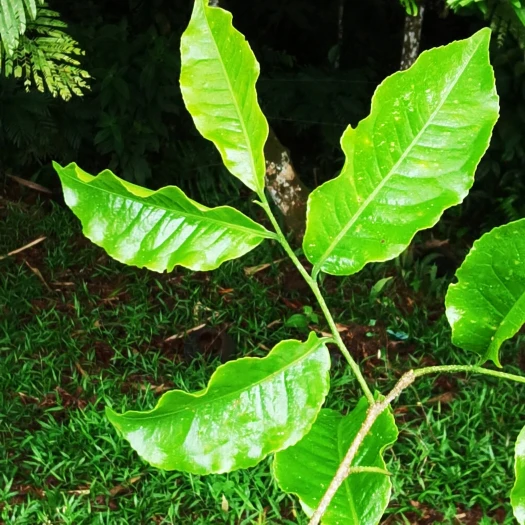Monkey Pot Tree
(Lecythis ampla)
Monkey Pot Tree (Lecythis ampla)
/
/

Eduardo Chacón-Madrigal
CC BY 4.0
Image By:
Eduardo Chacón-Madrigal
Recorded By:
Copyright:
CC BY 4.0
Copyright Notice:
Photo by: Eduardo Chacón-Madrigal | License Type: CC BY 4.0 | License URL: http://creativecommons.org/licenses/by/4.0/ | Rights Holder: Eduardo Chacón-Madrigal | Publisher: iNaturalist | Date Created: 2022-05-28T12:05:18-07:00 |











Estimated Native Range
Climate Requirements
| • Precipitation | 133" - 159" |
| • High Temp. | 84°F - 90°F |
| • Low Temp. | 65°F - 71°F |
Summary
Lecythis ampla, commonly known as the Monkey Pot tree, is a large deciduous tree that can reach up to 148 feet tall. It is native to the rainforests of Central and South America, particularly thriving in the wet, tropical forests on the Atlantic slope from Nicaragua to Brazil. This species is part of the Lecythidaceae family, which includes the Brazil nut. The Monkey Pot tree is characterized by its straight trunk and a broad, spreading canopy that provides significant shade. It produces striking pink or pale mauve flowers that are pollinated by bees. The flowering season is typically during the wetter months, and the flowers are considered showy due to their size and color. After pollination, the tree develops large, woody capsules that resemble pots, which is how it gets its common name. These capsules contain edible nuts that are dispersed by rodents and bats.
The Monkey Pot tree is valued for its ornamental qualities, including its impressive stature and attractive flowers. It is also appreciated for its ecological role in native forests, providing food for wildlife and contributing to the forest structure. In cultivation, it is used for reforestation projects and as a specimen tree in large gardens or parks. The tree requires a tropical or subtropical climate with high humidity and consistent rainfall. It prefers rich, well-drained soils and can tolerate partial shade but grows best in full sun. While not commonly grown in small gardens due to its size, it is an important species for botanical collections and larger landscapes. The wood of the Monkey Pot tree is durable and resistant to rot, making it suitable for shipbuilding and construction. The seeds are not only a food source for wildlife but are also consumed by humans and used in traditional sweets and folk medicine.CC BY-SA 4.0
The Monkey Pot tree is valued for its ornamental qualities, including its impressive stature and attractive flowers. It is also appreciated for its ecological role in native forests, providing food for wildlife and contributing to the forest structure. In cultivation, it is used for reforestation projects and as a specimen tree in large gardens or parks. The tree requires a tropical or subtropical climate with high humidity and consistent rainfall. It prefers rich, well-drained soils and can tolerate partial shade but grows best in full sun. While not commonly grown in small gardens due to its size, it is an important species for botanical collections and larger landscapes. The wood of the Monkey Pot tree is durable and resistant to rot, making it suitable for shipbuilding and construction. The seeds are not only a food source for wildlife but are also consumed by humans and used in traditional sweets and folk medicine.CC BY-SA 4.0
Plant Description
- Plant Type: Tree
- Height: 20-130 feet
- Width: 30-50 feet
- Growth Rate: Moderate
- Flower Color: White
- Flowering Season: Spring
- Leaf Retention: Deciduous
Growth Requirements
- Sun: Full Sun
- Water: High
- Drainage: Medium, Fast
Common Uses
Bee Garden, Bird Garden, Edible*Disclaimer: Easyscape's listed plant edibility is for informational use. Always verify the safety and proper identification of any plant before consumption., Showy Flowers
Natural Habitat
Native to the rainforests on the Atlantic slope from Nicaragua to Brazil
Other Names
Common Names: Coco, Paradise Nut, Sapucaia Nut
Scientific Names: Lecythis ampla, Lecythis ampullaria, Lecythis armilensis, Lecythis bogotensis, Lecythis boyacensis, Lecythis costaricensis, Lecythis curranii
GBIF Accepted Name: Lecythis ampla